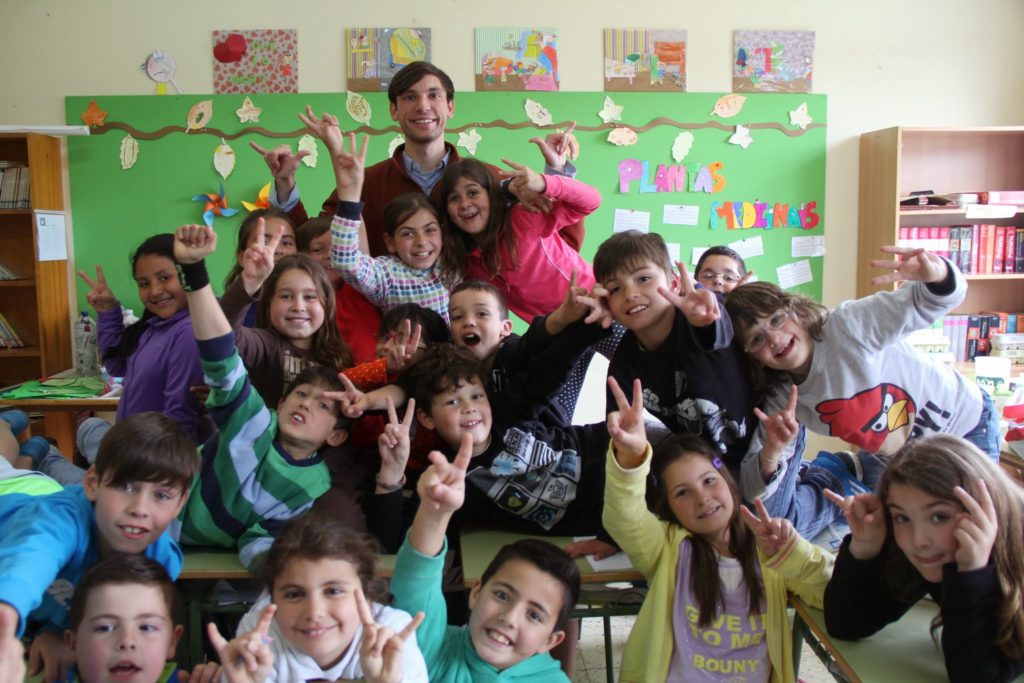Google educator 2 advanced certification: Understanding different learning models.
-
- Coaching model lets – teachers work one on one with colleagues for lesson planning, technical skill building, and demo lessons. Large group workshops are held for an entire school or district faculties.
-
- Trainer of trainers model – selected teachers that receive specialized training with the expectation they will train their fellow colleagues.
- Early adopters model – early adopters of technology share best practices at any opportunity.
The Tech Sherpas are a great example of a weekly, student-hosted Hangout On Air that answers teacher questions. Organizing a tech committee at a school supports teachers by giving teachers a voice on effective tech integration with access to quality digital resources. The technology plan for a school should include parent organizations, administrators, teachers, and students.
Teachers can improve collaboration with students and teachers at the next faculty meeting by creating a newsletter with Blogger or a YouTube playlist of video tutorials for creating Google Sites. The School site mentors models provide the most relevant and timely support to teachers on an individual basis when they need it. Finding and sharing online resources is an ongoing effort to keep the curriculum fresh and interesting. YouTube is a great option for finding new content, but some educators worry about searching for videos during class because it wastes time and inappropriate content might show up. Using a YouTube channel and playlists to address these concerns allow you to organize pre-selected videos and share your playlists to prevent wasted time searching.
A teacher does not provide the most authentic audience for students’ creative work. Anything with a link, Google Docs, Video, and Pictures are media that can be linked to in a Multimedia Text Set. Blended Learning, Project-Based Learning (PBL), and Flipped Classroom are learning techniques that allow time for a teacher to pull aside a small group for additional learning during class time.
- Project-Based Learning (PBL) – starts with a driving question followed by an inquiry process as students organize their thoughts. They then choose how to solve the problem and present their findings. PBL encourages students to devise their own solutions collaboratively to issues/problems rather than look for someone else’s solution by asking questions and finding answers. The Buck Institute is a good resource for PBL. There will be an archive of videos for students to watch later if needed, students can come to class with questions ready to ask, and teachers can do a quick formative assessment on the previous night’s content to determine what needs to be further explained are benefits of having students watch instructional videos before class.
- Blended Learning – a model that weaves classroom and online instruction together. Many blended classrooms rely on a robust teacher website where teachers can post activities for students to complete or create online. Blended learning often uses adaptive online learning programs that can increase skills and knowledge, freeing the teacher up to work intensively with smaller groups. Blended Learning is where students learn in the classroom setting with a teacher and online with guided activities. See the Clayton Christensen Institute for more information on Blended Learning.
- Flipped Instruction – switches up the instructional model of the classroom. The traditional model where students practice at home without assistance and receive content in class is flipped. Instead, students receive the content at home (normally by video) then the teacher reinforces the video and asks students to apply what they learned in class. The teacher is there to support and extend the learning. Flipped Learning can help students who don’t understand certain concepts to learn better on their own saving in-class time going over these concepts with students who already understand them. Google Drawing for Demonstrating Understanding, Google Forms to Collect Data, Google Charts in Spreadsheets to Visualize Data, and Google Slide show as an Individual or Group Alternative Assessment are great resources. The Flipped Learning model allows student access to concepts at any time of the day. Student created websites to demonstrate understanding, group-created slide shows to teach a concept, and Google Forms to assess and inform formative learning activities can be used to personalize learning in the classroom. Students could read an online article, contribute to a class slide show, analyze a photo, or listen to a historical speech do at home for a Flipped Classroom model that doesn’t involve video. A great way to showcase student work is to create a Google Site for students to link their projects and information, but Google Sites is much more than just a content repository. Google Sites support embedding a Google Calendar to keep track of important dates, Uploading recordings to cater to audio learners, adding images directly to the pages for visual (and educational!) appeal, and linking downloadable PDFs and other digital documents.



I love your blog.. very nice colors & theme. Did you create this website yourself? Plz reply back as I’m looking to create my own blog and would like to know wheere u got this from. thanks
This is a topic close to my heart cheers, where are your contact details though?
I was able tto find good advice from your articles.